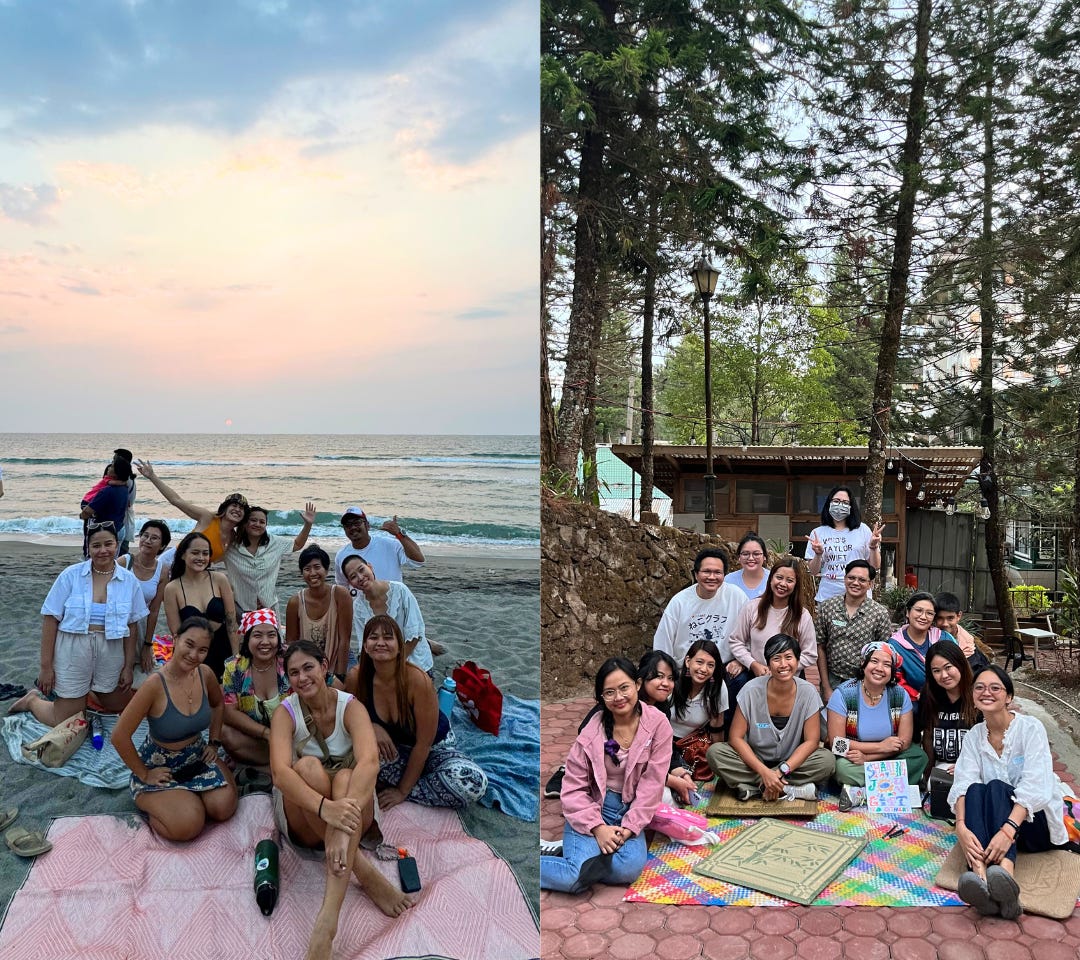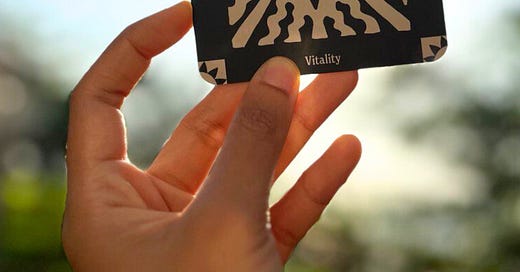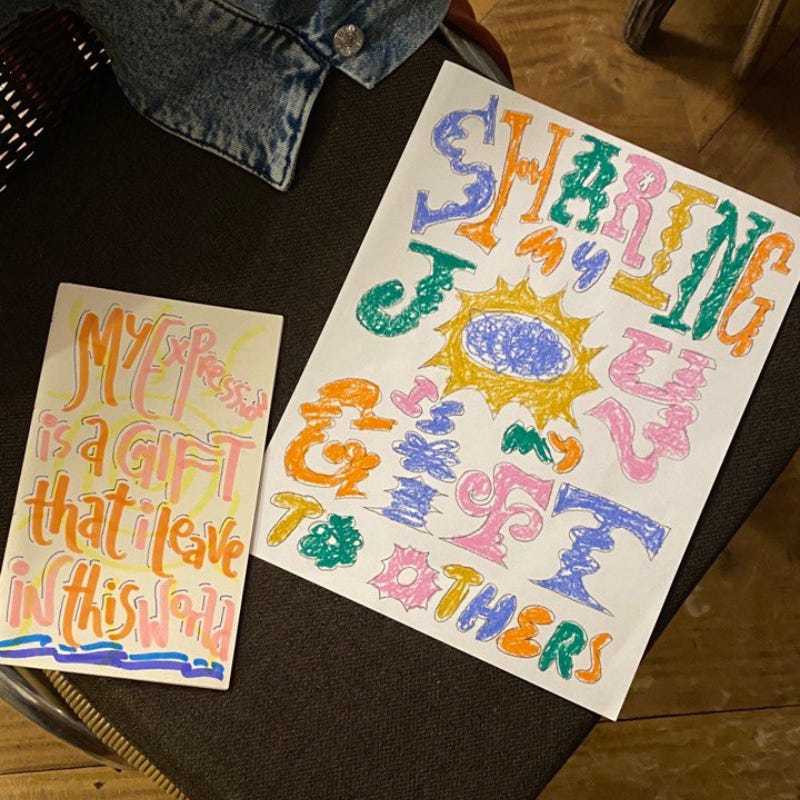Sigla sa Paghinga at Paglikha: Dancing between vitality and mortality
In what ways can paying attention to our body's capacity and limits make us feel more alive?
Hello, mga ka-Ugnayan!
It’s Jen again, and I’m writing this newsletter after a month of Ugnayan gatherings inspired by our April theme Sigla or Vitality, represented by the image of the sun. This theme is about our energy, our life force, and the connection of mind and body. (The irony though of the intense heat from the sun sapping our life force rather than energizing us.)
In this pahayagan, I’m sharing views and provocations in three sections:
Sigla’s essence
Sigla’s shadow
Sigla’s embodiment
…drawing from research, personal reflections and stories from our community.
It may be a deeper dive than in previous newsletters, so I hope you stay with me for the reward in the end. 😊

siglá
gaan ng katawan sa pagtupad o pagsasagawa ng isang bagay
sigasig na ipinamamalas sa isang gawain
energy (n.) vigor: sigla, sigasig, sipag
spirit (n.) liveliness: sigla, kasiglahan
drive (n.) force, power to succeed, initiative: sigla, kusa, pagkukusa, sigasig
Diwa ng Sigla: A Vital Life Source
More than just physical vigor, Sigla is a holistic expression of well-being. In Sikolohiyang Pilipino, it’s been connected to the ideas of gaan (ease / lightness) and gana (drive / motivation), which are enhanced by paying attention to our thoughts, emotions, bodily sensations, relationships and spirituality.1
In our Ugnayan Tambayans — Likha Ginhawa sa La Union at Baguio and Hinga at Sigla in Quezon City, Metro Manila, we asked participants:
Ano ang nagbibigay buhay sayo sa mga nakaraang linggo?
What has been life-giving for you lately?
There was range of responses that what contributes to this feeling of gaan, gana at sigla. And to me, a lot of it was about connection to self and kapwa — whether it was:
Discovering new things about one’s self in the playful and messy process of trying new (and often uncomfortable) things like dance, sports, art and;
Being with or in nature — from sea to mountain, or even the more-than-human (animals) in one’s home;
Expanding and deepening social connections — “loving vertically and horizontally” as LU participant Hannah shared, or going from “squares” and coming together more into circles of connection as Baguio participant Kroma shared
Appreciating the seemingly mundane of our everyday lives — noticing plants on a walk, the way the light hits the windows in one’s lanai, the mindful moments in our daily rituals, etc.

Listening to people share, we were inspired and reminded to relish the things, people and places, big and small, that make us come alive.
Many of these things are in our lives already, so how might we intentionally pause to notice and appreciate their impact in brightening our existence?
Knowing what is life-giving to us, what do we need to bring more Sigla into our days?2
Anino ng Sigla: Embracing Mortality and Transience
Sigla is not static. It evolves, fluctuates, and, ultimately, wanes — a reminder of life's impermanence. Light casts shadows, and we notice light more because of the dark.
One Sigla question in the deck goes like this:
Anong pinagpapasalamat mo na nagagawa ng iyong katawan sa edad mo?
What are you grateful that your body can still do at your age?
I used to think of Sigla more as a theme on mind-body connection, physical health, movement, and the like. But in conversations we’ve had at our Ugnayan Tambayans, as well as my own recent musings on death3, I’ve come to think more about our different senses and the different things our bodies can do that we so often take for granted:
Our nose and our lungs that allow us to inhale intention and exhale tension;
Our eyes that let us see the beauty of nature and community, and move us with the sight of injustice and oppression;
Our ears that let us hear kind words and praise, even when we’re more attuned to the sound of criticism;
that allow us to dance to joyful songs, and grieve with somber melodies;
Our lips that let us speak our truth, while knowing when to bite our tongue;
Our taste buds to savor the sweet more because of the salty, sour and bitter;
Our skin that allows us to feel the warm embrace of loved ones, and the cold air of dis-ease;
Our hands that give us the ability to create, and the capacity to destroy
Thinking about the transient nature of life gives us opportunity to reflect: How do we think about our inevitable death, and ultimately, how do we want to approach our lives?
Knowing that everything has its own life and death (this too shall pass), I hope rather than it result in us (or me, if I’m the only one thinking these things) operating from a place of fear and clinging onto, that instead, it allows us to relish each part of our life journey with all its side quests, however we can, while we can. 🍃
Pangatawanan ang Sigla: Leaning Into Sensation, Emotion, Intuition
A lot of conversations in the past month’s tambayans spoke to going back to the self and trusting one’s self — moving from a place of people-pleasing, perfectionism and “performance”, to a place of place of authenticity, joy, and play.
In somatic or body awareness practices — I catch myself thinking about my feelings vs. feeling my feelings, or thinking whether I’m moving right vs. trusting my body’s intuition and leaning into the flow. In the past few months of Ugnayan reflections and conversations, alone and in community, I think of this question:
Who were we before we forgot ourselves?
I believe the answer lies in our bodies. In our intuition. In where our energy is drawn towards. In what our spirit is called to do.
I’m not a particularly esoteric nor religious person. Yet I believe that it matters to heed the body’s call for rest (i.e. when we feel sickness coming on); it likewise matters to pay attention to niggling feelings that keep us up at night (i.e. pag di tayo mapakali). These are important cues from our bodies if we take a moment to listen and feel.

Sa nakaraang linggo, saan ka nakakaramdam ng paninikip o kaginhawaan sa katawan mo?
Where in your body have you been feeling tension or relaxation this past week?
By noticing our physiological sensations and sensing our emotions, we honor our bodies as vessels of sigla, breathing in energy and connectedness to life in all its forms.
What is your body telling you about what you need these days?
As we dance between vitality and mortality, I invite you to join me in reflecting on our existence:
How do you cultivate sigla in your daily life, honoring both your physical and spiritual vitality?
In what ways does mortality enrich your appreciation for what you’re still able to do with your body?
Knowing this, what do you feel compelled to do now?
What body awareness or movement practices can enable you to face daily challenges with greater resilience?
Umiindak sa galak,
Jen Horn | @pagbubuo
We don’t have available schedules for Ugnayan Tambayans this month yet, but we’ll be updating you on Instagram as soon as we firm up any plans. We just might do some casual hangs in Baguio and CDO this month. 👀
Follow @ugnayancards for the latest updates, or message us if you’re interested to host us in your city or venue!
Bautista, V. (2011) Gaan at Gana sa Buhay: Sikolhiya ng sarap, ligaya, at ginhawa sa pananawa ng sikolohiyang pang klinika. Mga Kaisipan sa Sikolohiya, Kultura at Lipunang Pilipino. Tomo 1, pp. 15-44.
In his 2018 book Atomic Habits, James Clear talks about starting even with short, easy 5-10 minute practices if we want to cultivate sustainable habits. Also, I say it doesn’t have to be done perfectly or “well” to be beneficial.





